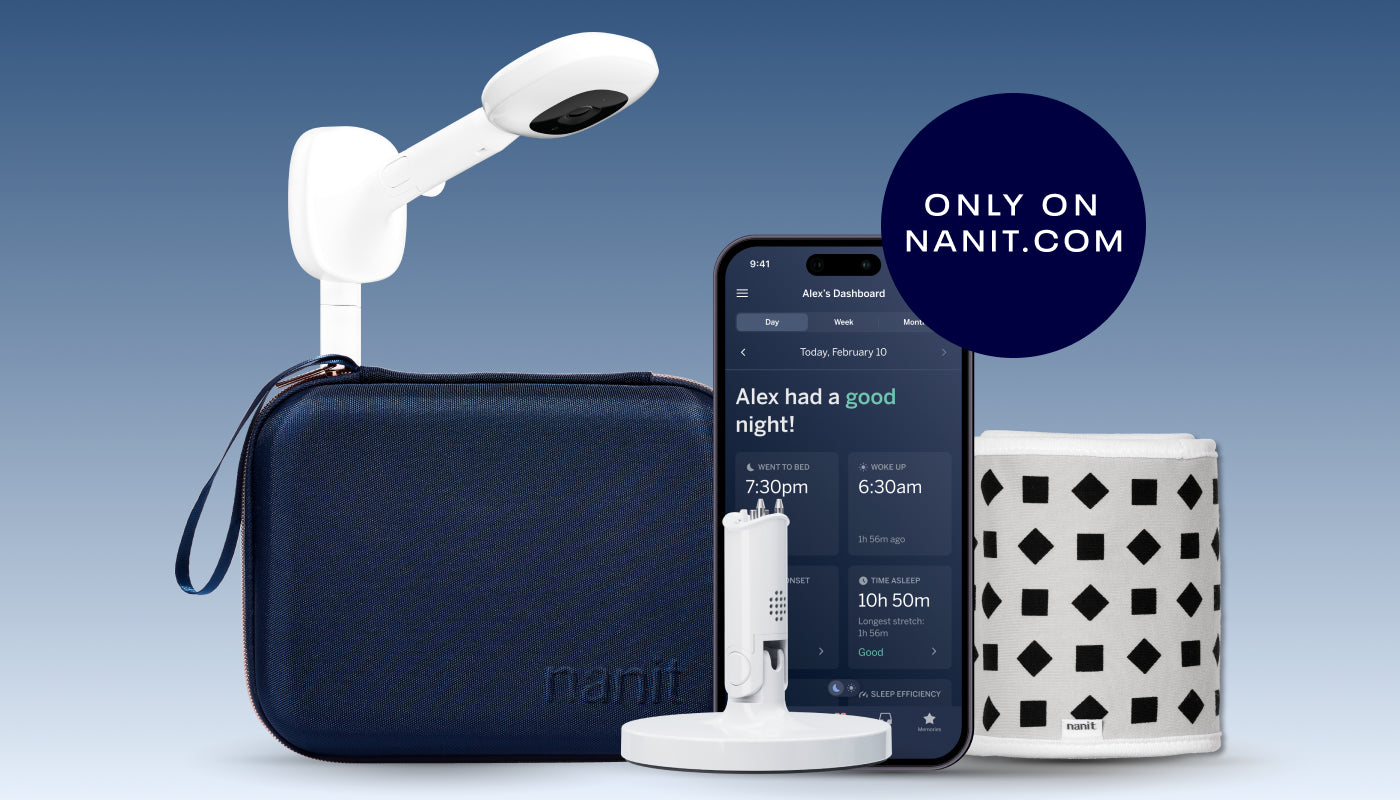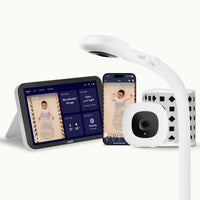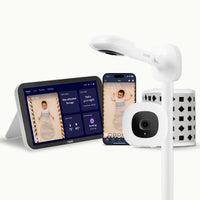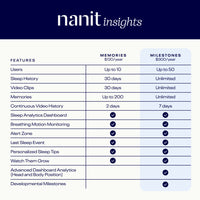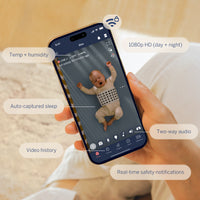Natalie Barnett, Assaf Glazer, Tor Ivry, Thomas Anders.
Presented at the Biennial Pediatric Sleep Conference in November 2019
Abstract
Objectives
The Nanit camera system uses computer vision technology and machine learning algorithms to accurately measure sleep and awake states in infants. Many thousands of babies across North America use the Nanit camera daily and automatically and anonymously generate sleep metrics. Large datasets of parent sleep questionnaires have been described previously, but no large, objective, automatically generated sleep dataset has been reported.
Methods
All night sleep videos were automatically collected on infants in the US and Canada using the Nanit camera system on babies aged 3-18 months sleeping in their cribs. Nights were included if they were more than 6 hours long, the sleep onset latency (SOL) was greater than zero and the night ended after 5am. A total of 1,785,697 nights was anonymously analyzed. The computer vision algorithms measured SOL, total sleep time (TST), sleep efficiency, total time awake, longest stretch asleep, time to bed, time out of bed and the number of parental interventions.
Results
The mean TST for all infants was 529 minutes per night at age 3 months which increased significantly (p<0.001) to 581 minutes by 6 months and increased significantly (p<0.0001) to 626 minutes at 18 months. Sleep onset for all babies increased steadily from 3-18 months with the average sleep onset at 3 months being 5.0 minutes and the average sleep onset at 18 months being 10.6 minutes. Average time to bed was 8.14pm at 3 months and decreased steadily to 7.45pm by 7 months, after which time it plateaued. Sleep efficiency was 82.2% at 3 months which increased to 90.5% at 9 months, after which time there was no significant increase in sleep efficiency. The mean number of parental interventions was 3.5 at 3 months and decreased to a mean of 0.96 by 18 months.
Conclusions
These data represent infant sleep in the US and Canada in 2018 and 2019. Across all infants, TST, sleep efficiencies and bedtimes are similar to data presented elsewhere from parent report studies. This is the largest dataset of infant sleep ever presented. A limitation of the dataset is that it represents babies only sleeping in cribs, not co-sleeping infants and is limited to Nanit customers. Over time, this dataset will grow exponentially, providing researchers with a longitudinal opportunity to refine developmental trajectories, to examine the emergence of individual differences and to track national trends over time.

About the Researchers
The researchers included Natalie Barnett, Assaf Glazer, Tor Ivry, and Thomas Anders.

- Dr. Natalie Barnett serves as VP of Clinical Research at Nanit. Natalie initiated sleep research collaborations at Nanit and in her current role, Natalie oversees collaborations with researchers at hospitals and universities around the world who use the Nanit camera to better understand pediatric sleep and leads the internal sleep and development research programs at Nanit. Natalie holds a Ph.D. in Genetics from the University of New England in Australia and a Postgraduate Certificate in Pediatric Sleep Science from the University of Western Australia. Natalie was an Assistant Professor in the Neurogenetics Unit at NYU School of Medicine prior to joining Nanit. Natalie is also the voice of Nanit's science-backed, personalized sleep tips delivered to users throughout their baby's first few years.
- Dr. Thomas Anders graduated from Stanford University (1956) and Stanford University School of Medicine (1960). He completed psychiatry and psychoanalytic training at Columbia Presbyterian Medical Center, NY. A two-year post-doctoral research fellowship preceded his appointment as Director of the Division of Child Psychiatry at SUNY/Buffalo. He also has headed Divisions of Child and Adolescent Psychiatry at Stanford (1974-1984) and Brown University (1985-1992). At UC Davis, he served as Department of Psychiatry Chair (1992-1998) and then as Executive Associate Dean (1998-2002). His long standing clinical and research interests are in the areas of maturation of infant sleep-wake states and pediatric sleep disorders in children with ASD. He has been an NIH funded investigator and served as President of the American Academy of Child and Adolescent Psychiatry (2005-2007).
